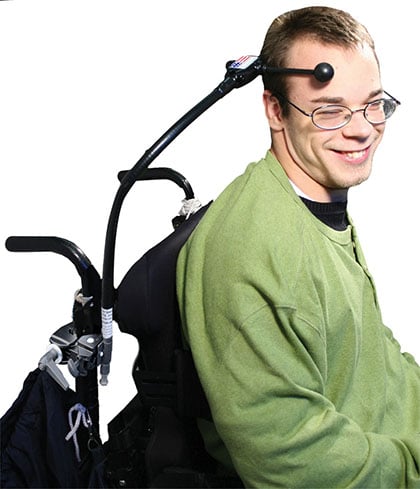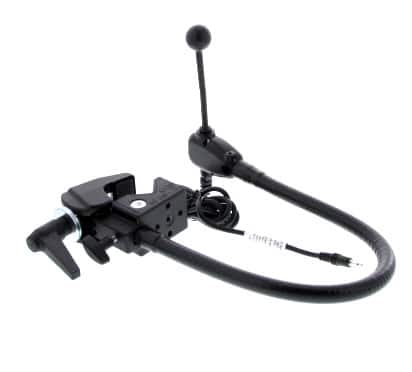Description
Adaptive switches help individuals who navigate life with wheelchairs gain the agency they need to perform everyday tasks. Children and adults with physical or neurological disabilities can activate household devices with ease using our ball end wobble switches. Users operate these adaptive tools by applying light pressure to the toggle using the head, elbow, shoulders or neck to turn on lights, use kitchen appliances, operate televisions and more in conjunction with an appliance switch unit.
At Enabling Devices, we believe every individual deserves to achieve their goals and lead a joyful and fulfilling life. That’s why we design, manufacture and customize a wide range of enriching products for people with special needs, and have been for over 40 years.
Our ball end switches are available in five different styles:
- 12-inch gooseneck and Clamp
- 19-inch wireless and Clamp
- 19-inch with gooseneck and Clamp
- Six-inch gooseneck and Clamp
- Ultimate switch only (no gooseneck)
You can attach these wobble switches to the armrests or backs of wheelchairs. With so many models available, you’re sure to find the one that best suits your needs.
Benefits of Ball End Wobble Switches
Adaptive switches like our ball end wobble act as an interface between technology and the user, helping them perform tasks according to their abilities. These devices offer a wide range of benefits to individuals with movement-limiting disabilities, such as:
- Simplify complex actions: Ball end switches offer individualized modifications for everyday tasks, eliminating the need for complex actions like turning knobs, pulling cords and pressing buttons.
- Operate useful appliances: These devices give users the ability to activate appliances like lamps, televisions and radios when used with an appliance switch unit such as our 1-Switch Single-Appliance Unit (#1490).
- Gain self-confidence: When individuals find success performing actions that once posed challenges, they become more confident and gain higher self-esteem.
- Become more independent: Wheelchair users can independently execute tasks that would otherwise require assistance.







